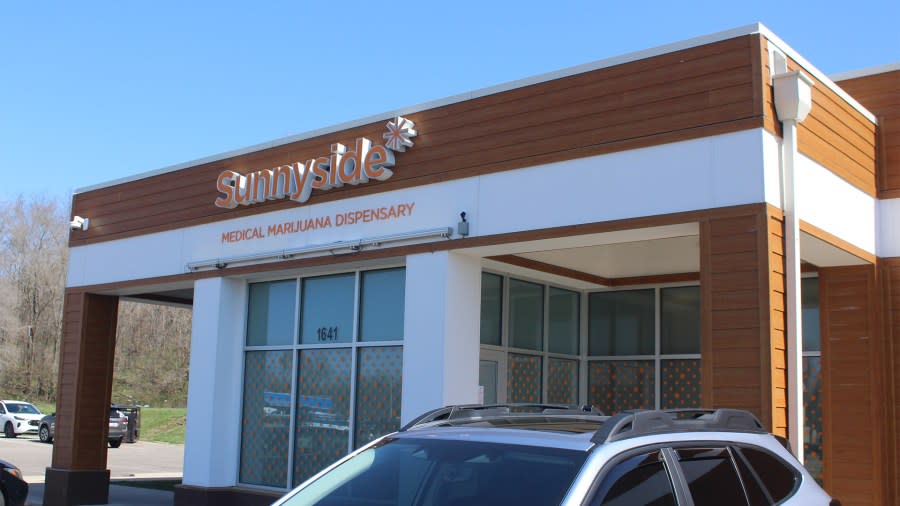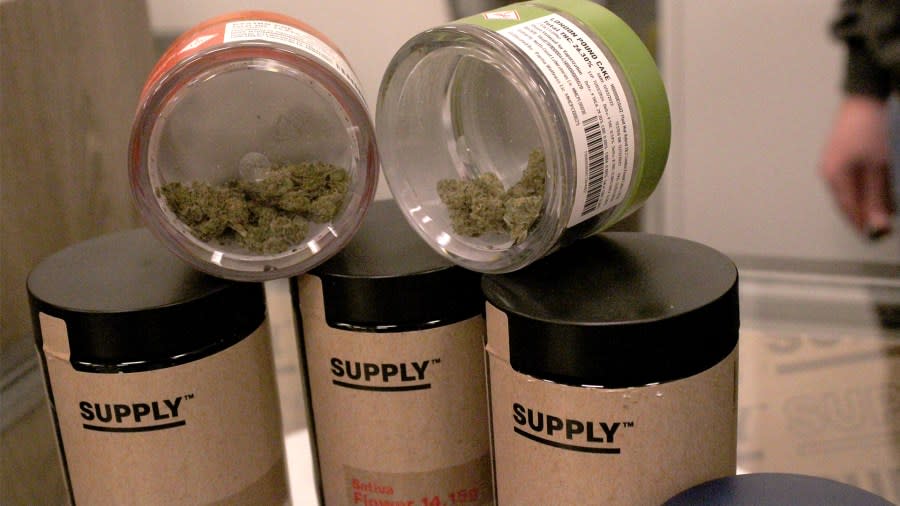Ohio marijuana: How are future ‘dual-use’ dispensaries preparing for recreational sales?
View a previous report in the video player above.
CHILLICOTHE, Ohio (WCMH) — Proposed rules for recreational sales from Ohio’s marijuana regulator have the state’s medical dispensaries considering how they can get in on the action.
The Ohio Division of Cannabis Control revealed a plan in February that would let existing shops selling medical marijuana transition to “dual-use dispensaries.” After getting approval through the proper channels, these shops would then be allowed to also sell recreational marijuana alongside filling prescriptions.
Sunnyside Medical Marijuana Dispensaries, a chain with locations in Ohio and the Midwest at large, has past experience with making the switch from exclusively selling prescription cannabis to offering both in other states. The company operates medical dispensaries in towns including Chillicothe and Newark, and also has a marijuana growing facility in Yellow Springs which produces its own brands such as Supply. It’s this last location where Senior Marketing Manager Kierston Powell said her company and others are feeling the first effects of recreational marijuana in Ohio.
“We are amping up production to plan and prepare for adult use, but coming out of that facility is all of our house brand products,” Powell said. “You’re seeing flower, you’re seeing vapes, you’re seeing edibles … and that facility supports not only our Sunnyside dispensaries but other vendors that are we selling to in other dispensaries.”

The DCC’s plan won’t be issuing certificates allowing dispensaries to start recreational sales til an unspecified date after Sept. 7, according to Public Information Officer Jamie Crawford.
“The current draft rules have the goal of issuing applications to current medical marijuana licensees by June 7 as required by the initiated statute approved by voters,” Crawford said.
It’s during this gap between applications and the rollout that the DCC would allow dispensaries to build add-ons like a recreational storefront, or hire and train staff for it. Because of that, Powell specified that the current ramp-up is happening at Sunnyside’s grow facility, but there’s no visible difference at the dispensaries yet.
“From a back-of-house perspective, not much is changing,” Powell said. “From a front-of-house perspective, we’re going to expand, make more space for more people to come in and out of our stores. The process for a shopping experience will be very similar to what a med patient would be experiencing.”

Powell said Sunnyside didn’t have any detailed plans she could publicly share related to expansion. If there’s one thing she knows her company will need when the green light comes for recreational sales, it is manpower.
“There’s definitely going to be a job and staffing need in our dispensaries. … There definitely will be a recruitment period in which we will be staffing up to prepare for adult use. Granted, we are prepared if we turned on tomorrow. However, we would still be recruiting heavily.”
Sunnyside won’t be the only dispensary hiring, either. The marketing manager said the company’s experience in other states has shown there’s typically a spike in openings after full legalization.
“Today, in the program, there’s 128 dispensaries … post adult-use, the game plan is about 300 dispensaries in the state of Ohio,” Powell said. “There will be multiple dispensaries to choose from, but it’s not necessarily going to be every corner of the block.”

With no real way to buy recreational marijuana in Ohio, or bring it back from other states with legalization, medical marijuana remains the only way to buy ready-to-use cannabis in the state. Deliberations on Ohio Statehouse bills to amend how recreational marijuana will work have left the state waiting for a legal vendor. Gov. Mike DeWine has expressed interest in House Bill 86, which essentially mirrors the dual-use dispensary proposal from the DCC but would accelerate the start of sales.
Powell pointed out that from a simple cost perspective, medical marijuana is still an option with perks for customers who have qualifying health conditions.
“There will definitely be tax benefits to staying medical in an adult-use market,” Powell said. “The medical patients, they will experience just your average sales tax, whereas adult-use cannabis patients will be experiencing a higher state tax which hasn’t been clarified by the state yet.”
Powell didn’t know a specific amount, but speculated Ohio’s tax rate on recreational marijuana could be anywhere from 13% to 15% based on what other states are charging.
For the current medical process, patients bring a state ID and a medical card to check in to the dispensary. After that, they can either pick up an online order, or talk with a consultant to get recommended products. place an order live then check out. Anticipating demand for recreational products, Powell recommended that medical patients needing quick access to prescriptions order online to keep the process as quick as possible.
However, Sunnyside has its eyes set on recreational marijuana, and is well aware of what it will do to their sales based on past experience.
“We are prepared and ready for adult use sales to go live … whether that’s in the fall or tomorrow,” Powell said.
For the latest news, weather, sports, and streaming video, head to NBC4 WCMH-TV.
